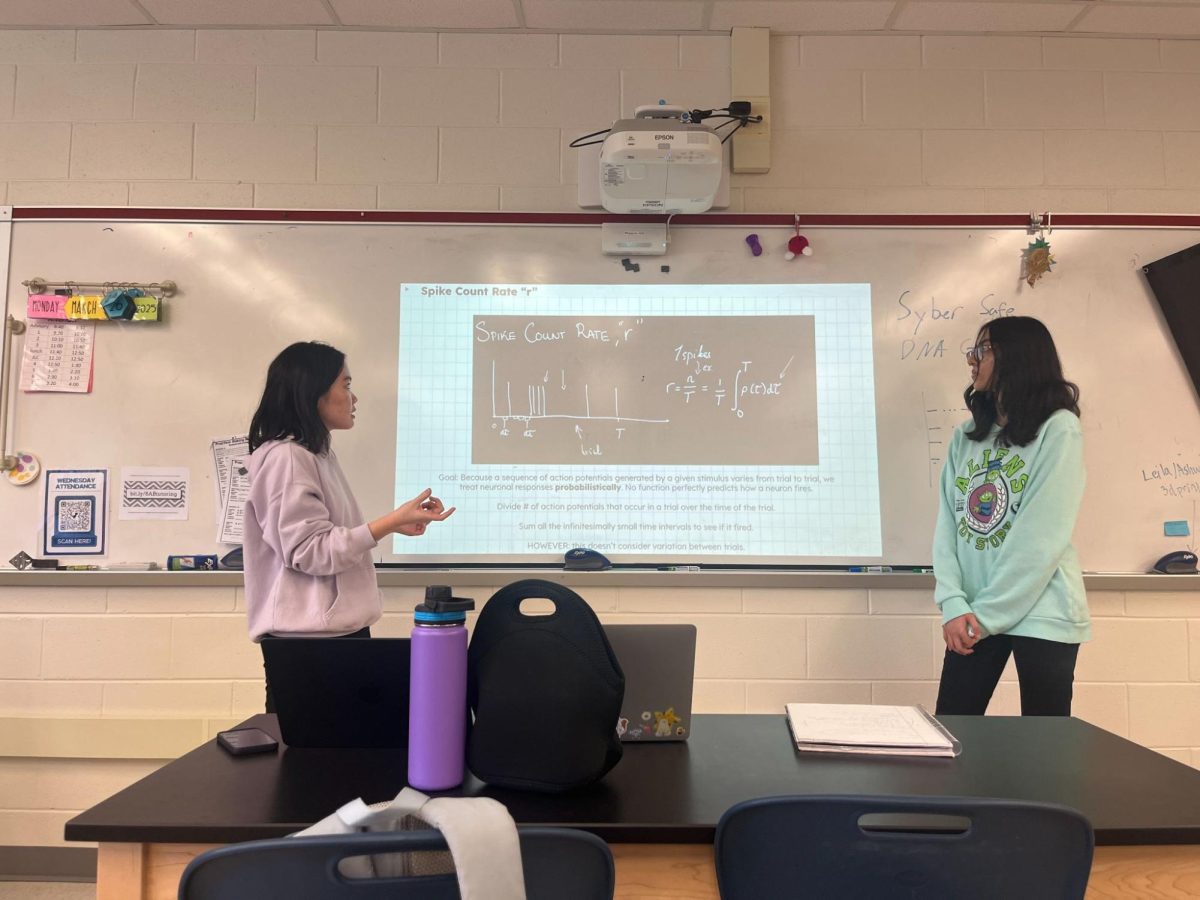The Computational Neuroscience club was started on Wednesday, Jan. 27. Students are now able to incorporate their love for the brain along with the technicality of coding and math.
The club itself, however, isn’t entirely new. It existed a few years ago but was discontinued due to losing its sponsor and issues with club leadership.
“The club was last around two years ago,” junior and president Ramini Paruchuri said. “The officers stopped showing up, and it was really disappointing to see the club lose its engagement and passion. We learned so much from the club when we attended it as sophomores. Ananya, Grace, and I wanted to start it again. This is a STEM school, so every aspect of STEM should be able to be explored, both in school and through our clubs.”
By reviving Computational Neuroscience, the founders hope to create a more sustainable learning environment that will allow the club to thrive for years to come. The new leaders of the club worked together to come up with new possibilities and activities for the reemerging club.
“We’ve made lectures on neuroscience that integrate computer science like convolutional neural networks, and more,” Paruchuri said. “We plan to go through some papers to teach code and develop computer science-based labs to practice these skills.”
During the club’s third meeting, they hosted a computational neuroscience-themed escape room, where members got into groups and collaborated to “crack the code.”
“It was a very interesting activity,” freshman Kelly Zhang said. “We solved an escape challenge on a Google form.”
Students found the club activity engaging and appreciated the opportunity to apply their previous knowledge in a new way.
“It was really cool to learn how to apply computer science with elements of neuroscience in a fun way,” Zhang said. “I’ve been interested in [computer science], so when I saw the club on Ion, I wanted to learn more about how the two would intersect.”
Computational Neuroscience isn’t the first club of its kind. Jefferson also offers Neuroscience Society, Medical Society and coding clubs like Code++ that explore similar fields. This club sets itself apart from similar clubs by providing a space where students can practice with both the theoretical and practical applications of computational methods in neurobiology.
“I started out being really interested in computer science, and I joined some of [Jefferson’s] computer science clubs, but I started to develop a passion for this field when I was doing an independent research project with the other president,” junior and teaching coordinator Grace Amartuvsian said. “I realized this field was so niche that it’s difficult to learn completely on your own.”
By giving students a friendly, collaborative environment to explore their interests in the intersection of neurobiology and computer science, this club offers new, exciting opportunities for learning about computational neuroscience.
“Computational fields are growing in medicine,” junior and club co-president Ananya Bhatt said. “We want this club to give more exposure to people with bioinformatics, machine learning models, and more. Everyone is welcome.”

